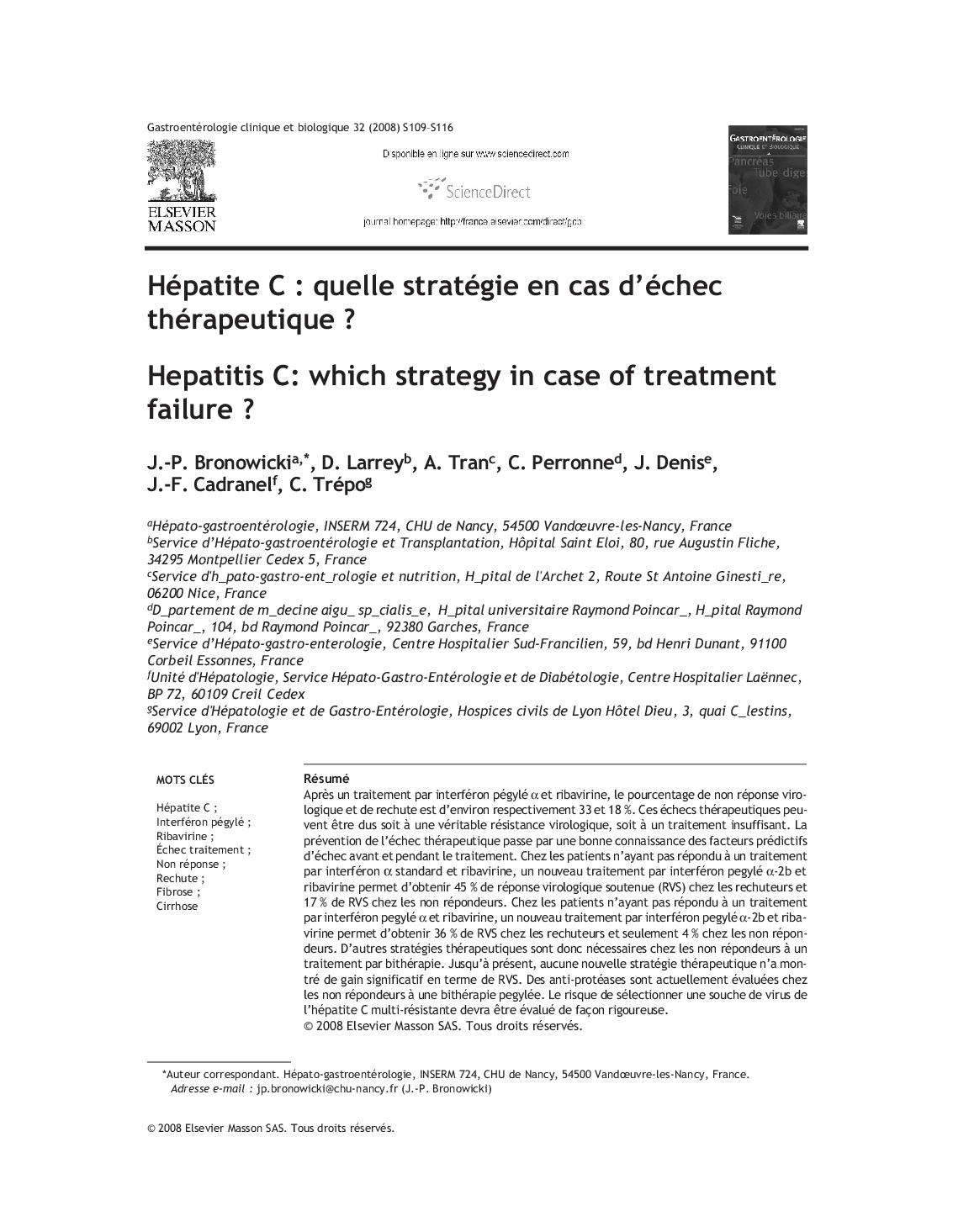| Article ID | Journal | Published Year | Pages | File Type |
|---|---|---|---|---|
| 3291001 | Gastroentérologie Clinique et Biologique | 2008 | 8 Pages |
RésuméAprès un traitement par interféron pégylé α et ribavirine, le pourcentage de non réponse virologique et de rechute est d’environ respectivement 33 et 18 %. Ces échecs thérapeutiques peuvent être dus soit à une véritable résistance virologique, soit à un traitement insuffisant. La prévention de l’échec thérapeutique passe par une bonne connaissance des facteurs prédictifs d’échec avant et pendant le traitement. Chez les patients n’ayant pas répondu à un traitement par interféron α standard et ribavirine, un nouveau traitement par interféron pegylé α-2b et ribavirine permet d’obtenir 45 % de réponse virologique soutenue (RVS) chez les rechuteurs et 17 % de RVS chez les non répondeurs. Chez les patients n’ayant pas répondu à un traitement par interféron pegylé α et ribavirine, un nouveau traitement par interféron pegylé α-2b et ribavirine permet d’obtenir 36 % de RVS chez les rechuteurs et seulement 4 % chez les non répondeurs. D’autres stratégies thérapeutiques sont donc nécessaires chez les non répondeurs à un traitement par bithérapie. Jusqu’à présent, aucune nouvelle stratégie thérapeutique n’a montré de gain significatif en terme de RVS. Des anti-protéases sont actuellement évaluées chez les non répondeurs à une bithérapie pegylée. Le risque de sélectionner une souche de virus de l’hépatite C multi-résistante devra être évalué de façon rigoureuse.
After a treatment by peginterferon α and ribavirin, the percentages of non response and relapse are approximatively 33 and 18 % respectively. These treatment failures may be due either to viral resistance or to an insufficient treatment. The prevention of treatment failure is based on a good knowledge of the predictive factors of failure before and during the treatment. Among the patients who did not respond to interferon α and ribavirin, a new treatment with peginterferon α-2b and ribavirin makes it possible to obtain 45 % of sustained virological response (SVR) among the relapsers and 17 % of SVR among the non responders. Among the patients who did not respond to peginterferon α and ribavirin, a new treatment with peginterferon α-2b and ribavirin makes it possible to obtain 36 % of SVR among the relapsers and only 4 % of SVR among the non responders. New therapeutic strategies are necessary for the non responders. Until now no new therapeutic strategy allowed a significant benefit in term of SVR. Protease inhibitors are currently tested in non responders but there are some concerns about the risk of selection of multi-resistant strains.
